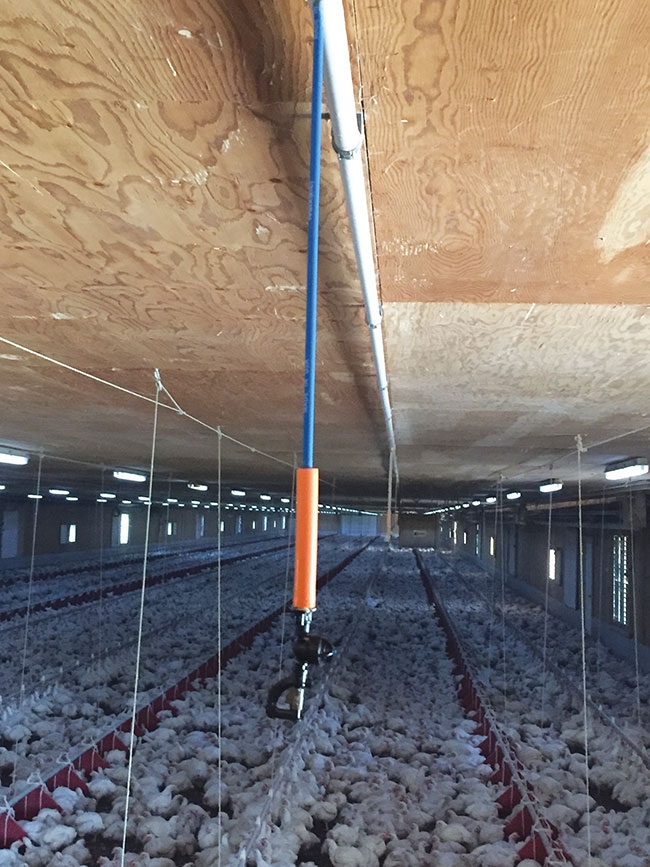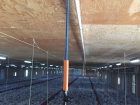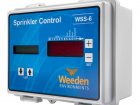
Innovations: The Weeden Sprinkler System
By Karen Dallimore
Features New Technology ProductionDevice provides cooling and promotes activity.
 Data from the University of Arkansas (Liang et al, 2011, unpublished) shows how the Weeden Sprinkler System maintains humidity levels up to 20 per cent lower than cooling pads with foggers. Each sprinkler spinner covers 450-square feet. Photos: Weeden Environments
Data from the University of Arkansas (Liang et al, 2011, unpublished) shows how the Weeden Sprinkler System maintains humidity levels up to 20 per cent lower than cooling pads with foggers. Each sprinkler spinner covers 450-square feet. Photos: Weeden EnvironmentsThere are three design elements of the Weeden sprinkler system.
Sector: Turkeys, broilers, cage-free layers
Company: Weeden Environments
Location: Woodstock, Ont.
Equipment specs
There are three design elements of the Weeden sprinkler system.
Cooling – Water feeds through each sprinkler spinner at low pressure to create a 24-foot diameter circular pattern, covering 450-square feet. Large water droplets fall onto the birds, causing them to stand up. The hot air built up underneath the birds is then exhausted using existing ventilation. The droplets of water on the heads and backs of the birds evaporate, helping to create a wind chill cooling effect as the ventilated air moves over them.
The controller uses bird age and temperature to regulate the amount of water used. Sprinklers use half the water that a fogging system uses: A 20 to 25,000-square foot house uses one five-gallon pail of water per cycle.
Activity promotion – Chickens and turkeys spend a lot of time sitting down, even in only moderate heat stress. Once the birds get up there is a natural tendency to go to the feed and water, improving performance by encouraging the birds to eat multiple times each day.
Dust control – Over 90 per cent of the turkey breeders in North America are using sprinklers for dust control year-round. More recently, this system may find opportunity in the cage-free layer sector to battle dust issues.
Innovation factor
Foggers raise the humidity, which hinders the bird’s ability to pant effectively. The Weeden system cools the birds, performing well combined with cool cells and tunnel ventilation.
Print this page

